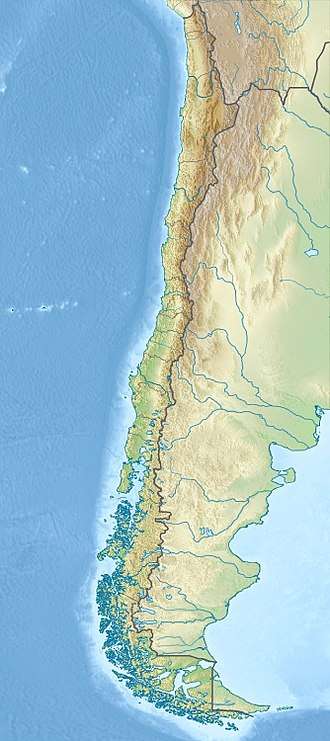Swedish-ESO Submillimetre Telescope
 Swedish-ESO Submillimetre Telescope | |
| Observatory |
La Silla Observatory |
|---|---|
| Location(s) |
Chile |
| Coordinates |
29°16′S 70°44′W / 29.26°S 70.73°WCoordinates: 29°16′S 70°44′W / 29.26°S 70.73°W |
| Organization |
European Southern Observatory Onsala Space Observatory |
| Built |
–1987 |
| Telescope style |
Parabolic reflector Radio telescope |
| Diameter |
15 m (49 ft 3 in) |
| Focal length |
4,875 mm (15 ft 11.9 in) |
 Location of Swedish-ESO Submillimetre Telescope | |
The Swedish-ESO Submillimetre Telescope (SEST) was a 15-metre diameter radio telescope located at the La Silla Observatory in Chile. The telescope was built in 1987 as a combined project between ESO and Onsala Space Observatory, with contributions from Finland and Australia.[1] It was then the only large telescope for submillimetre astronomy in the southern hemisphere.[2] It was decommissioned in 2003.[3]
The telescope was used for single-dish observations of a wide range of astronomical objects, especially the Galactic centre and the Magellanic Clouds and for interferometric observations at millimetre wavelengths.[1]
In 1995 observations made with SEST showed that the Boomerang Nebula is the coldest known location in the universe, with a temperature lower than the background radiation.[4][5]
Gallery
 SEST and Orion constellation with his famous belt and sword.[6]
SEST and Orion constellation with his famous belt and sword.[6] SEST dish measures 15 metres across. It was decommissioned in 2003.[7]
SEST dish measures 15 metres across. It was decommissioned in 2003.[7] Sky filled with star trails, a result of the camera's long exposure time.[8]
Sky filled with star trails, a result of the camera's long exposure time.[8]- SEST with the ESO 3.6 m Telescope in the background
See also
References
- 1 2 "Swedish-ESO Submillimetre Telescope - SEST". Onsala Space Observatory. Retrieved 2012-07-27.
- ↑ R. S. Booth; et al. "The Swedish-ESO Submillimetre Telescope" (PDF). ESO. Retrieved 2012-07-27.
- ↑ "Swedish-ESO 15m Submillimeter Telescope (SEST)". Archived from the original on 2012-07-30. Retrieved 2012-07-27.
- ↑ Cauchi, Stephen (February 21, 2003). "Coolest bow tie in the universe". The Sydney Morning Herald. Archived from the original on September 1, 2006. Retrieved February 2, 2007.
- ↑ Sahai, Raghvendra; Nyman, Lars-Åke (1997). "The Boomerang Nebula: The Coolest Region of the Universe?". The Astrophysical Journal. 487 (2): L155–L159. Bibcode:1997ApJ...487L.155S. doi:10.1086/310897.
- ↑ "Hunting stars". www.eso.org. Retrieved 10 July 2017.
- ↑ "La Silla Dawn Kisses the Milky Way". Retrieved 23 March 2016.
- ↑ "Dizzying Star Trails over SEST". www.eso.org. European Southern Observatory. Retrieved 22 September 2014.